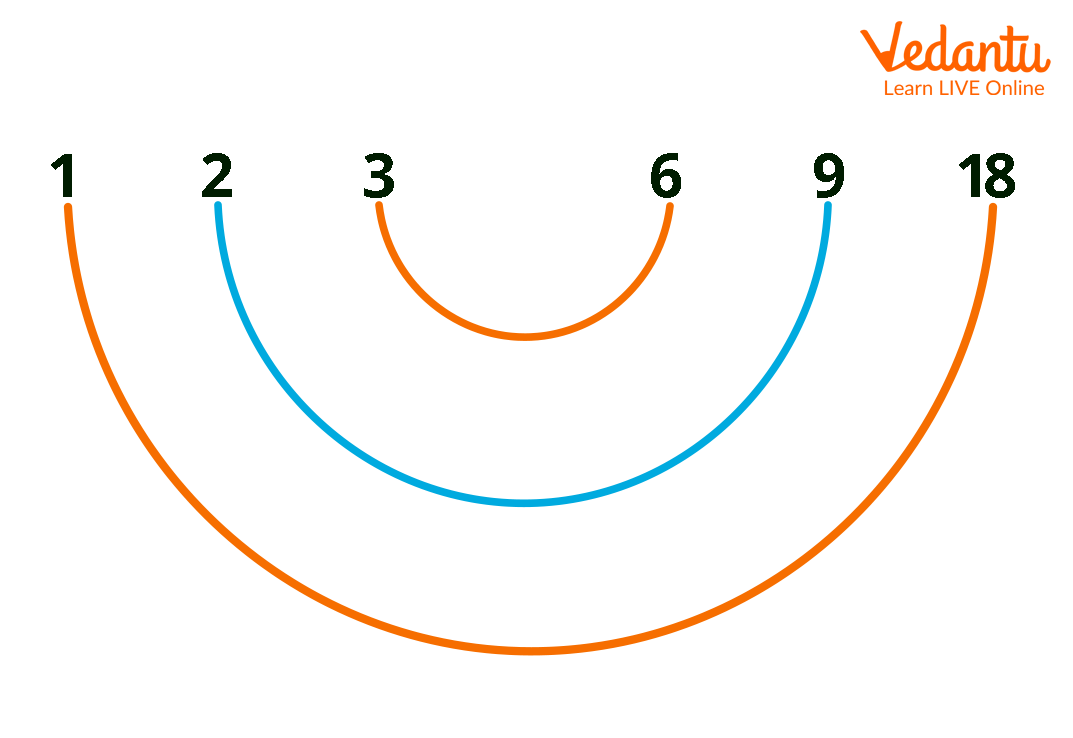




Introduction
Any integer that divides a number into another number equally is considered a factor. In the division problem, for instance,
Division Factor
The numbers that can divide a number exactly are called factors. There is, therefore, no remainder after division. The numbers you multiply together to obtain another number are called factors. A factor is therefore another number's divisor.
Divisor vs. Factor
Any number that divides another number is known as the divisor. However, a factor is a divisor that completely divides the integer and leaves no remainder. Therefore, any factor of a number is also its divisor. But not all factors are divisors; a number's divisors are all of its factors. In the previous illustration, the components of 20 are 4 and 5. However, dividing 20 by 3 does not result in a perfect division of the number.
How to Divide Factors?
What are the Factors of 18 (Division Method)?
Steps to find division factors of 18:
STEP 1: Using division laws, we determine the number's smallest exact prime divisor (factor). Here, the number 18 is even. It can be divided by 2. Therefore, 2 divides 18 without leaving a remainder. So, the least prime factor of 18 is 2.
STEP 2: Is to divide the supplied number (18) by its smallest prime factor, which equals 9.
STEP 3: Next, we identify the derived quotient's prime factors. Repeat steps 1 and 2 until the quotient is a prime number. Here, the quotient is 9, therefore
We stop the operation here because 3 is the quotient. Consequently

Pairs for Factors of 18
Solved Examples
Example 1: List the factors of 18 and their corresponding factor pairs in Example 1.
Ans:
Therefore, the factors of 18 are 1, 2, 3, 6, 9, and 18.
Pairs of the factors of 18 are (1,18), (2,9), and (3,6)
Example 2: Find the common factors of 25 and 24.
Ans: The factors of 25 are as follows: 1, 5, and 25.
The factors of 24 are as follows: 1, 2, 3, 4, 6, 8, 12, and 24.
Thus, the common factor of 25 and 24 is 1.
Example 3: Find the factors of 72.
Ans: 72 is represented as the product of the following additional numbers:
Since multiplication is currently being repeated, it must be stopped.
Conclusion
Factors and multiples by using division facts, for instance, are employed while handling money, sorting objects into boxes, looking for patterns in numbers, resolving ratios, or expanding or contracting fractions. In Mathematics, a factor is an integer that divides another number equally by itself while producing no remainder. We frequently come across factors and multiples.
FAQs on Division Factor
1. Is 3 a factor of 9?
Yes, 3 is a factor of 9, as 3 divided by 9 will give no remainder.
2. Is 4 a factor of 25?
No, 4 is not a factor of 25. As 4 divided by 25 will leave the remainder and not 0.
3. What is the total sum of the 18 factors?
Since there are 18 components totalling 1, 2, 3, 6, 9, and 18, the answer is
4. Can a number's factors be negative?
A number totally divides the provided number without leaving any residual is said to be the factor of that number. A number can, thus, have either positive or negative factors.











